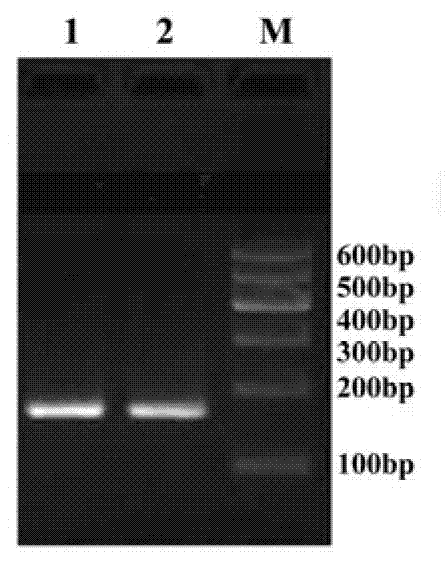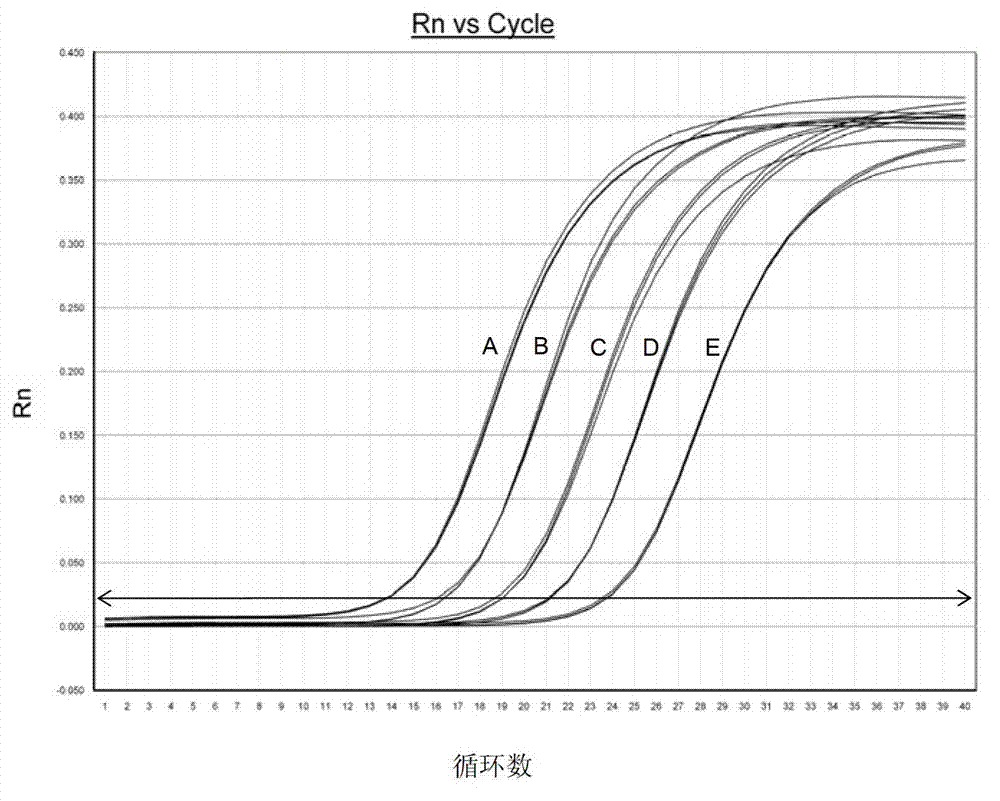Real-time fluorescent quantitative PCR (polymerase chain reaction) detection method and kit for resistance of plutella xylostella to Bt insecticidal proteins
A technology of insecticidal protein and diamondback moth, applied in the biological field, can solve the problems of high material requirements, low sensitivity, and poor repeatability, and achieve the effect of less material requirements, high sensitivity and accuracy, and short detection cycle
- Summary
- Abstract
- Description
- Claims
- Application Information
AI Technical Summary
Problems solved by technology
Method used
Image
Examples
Embodiment 1
[0050] Detection of midgut cDNA samples of 4th instar larvae of DBM1Ac-S and DBM1Ac-R by real-time fluorescence quantitative PCR technology and establishment of the detection kit and its application method.
[0051] 1. Taking the conserved fragment region of the alkaline phosphatase gene in the membrane-bound form on the brush border membrane vesicles of the diamondback moth midgut as the target sequence (sequence 1 in the sequence listing), according to the principle of real-time fluorescent quantitative PCR primer design, design specific The sequences of fluorescent quantitative primers are as follows:
[0052] Forward primer (qALP-F): 5'-GCACACACCATGACCGTAGCAG-3' (sequence 2 in the sequence listing);
[0053] Reverse primer (qALP-R): 5'-GGCTCTTCGTGACATCG-3' (sequence 3 in the sequence listing);
[0054] The specific primer amplifies the fragment sequence as figure 1 As shown, its amplification specificity is as figure 2 (In which, 1: midgut cDNA sample of 4th instar Plu...
Embodiment 2
[0089] Through the other two Bt-resistant diamondback moth populations T 2 -R and SH-R verify the usability of the kit and detection method in Example 1, and the specific experimental process is as shown in Example 1.
[0090] The final fluorescent quantitative PCR reaction test results are as follows: Figure 6 Shown in, wherein, A: negative control sample of the midgut cDNA of the 4th instar larvae of the sensitive Plutella xylostella population DBM1Ac-S to Bt insecticidal protein in embodiment 1; B: produce resistance to Bt Cry1Ac insecticidal protein in embodiment 1 positive control sample of midgut cDNA of 4th instar larvae of Plutella xylostella population DBM1Ac-R; C: cDNA test sample of midgut cDNA of 4th instar larvae of Plutella xylostella population T2-R resistant to Bt Cry1Ac insecticidal protein; D: A test sample of midgut cDNA from the 4th instar larvae of Plutella xylostella population SH-R resistant to Btk.
[0091] Under specific wavelength conditions, accor...
PUM
 Login to View More
Login to View More Abstract
Description
Claims
Application Information
 Login to View More
Login to View More - Generate Ideas
- Intellectual Property
- Life Sciences
- Materials
- Tech Scout
- Unparalleled Data Quality
- Higher Quality Content
- 60% Fewer Hallucinations
Browse by: Latest US Patents, China's latest patents, Technical Efficacy Thesaurus, Application Domain, Technology Topic, Popular Technical Reports.
© 2025 PatSnap. All rights reserved.Legal|Privacy policy|Modern Slavery Act Transparency Statement|Sitemap|About US| Contact US: help@patsnap.com



